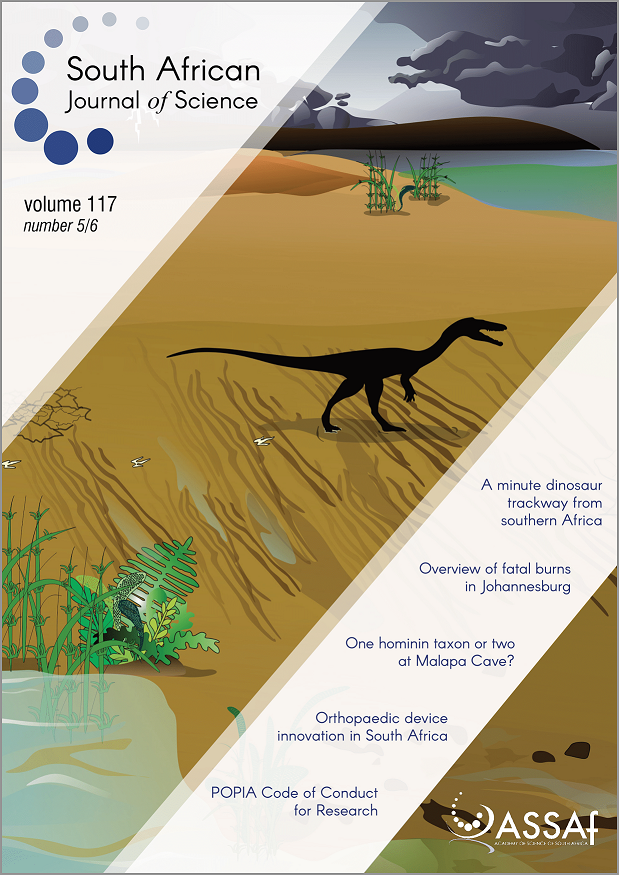One hominin taxon or two at Malapa Cave? Implications for the origins of Homo
DOI:
https://doi.org/10.17159/sajs.2021/8747Keywords:
Australopithecus sediba, Homo spp., Malapa hominins, hominin phylogeny, South AfricaAbstract
A report on the skeletons of two individuals from the Malapa cave site in South Africa attributes them both to a new hominin species, Australopithecus sediba. However, our analysis of the specimens’ mandibles indicates that Australopithecus sediba is not a ‘Homo-like australopith’, a transitional species between Australopithecus africanus and Homo. According to our results, the specimens represent two separate genera: Australopithecus and Homo. These genera are known to have jointly occupied sites, as seen in several early South African caves, so one cannot rule out the possibility that Malapa also contains remains of the two taxa. Our results lead us to additionally conclude that all the Australopithecus species on which the relevant mandibular anatomy is preserved (not only the ‘robust’ australopiths but also the ‘gracile’ – more generalised – ones) are too specialised to constitute an evolutionary ancestor of Homo sapiens. Furthermore, given that the Malapa site contains representatives of two hominin branches, one of which appears to be Homo, we must seek evidence of our origins much earlier than the date assigned to Malapa, approximately 2 million years before present. Support for this claim can be found in Ethiopian fossils attributed to the genus Homo and dated at 2.4 and 2.8 million years before present.
Significance:
- The proposed hominin species Australopithecus sediba, from the Malapa Cave in South Africa, seems to actually consist of two species, each of which represents a different hominin genus: Homo and Australopithecus. If, indeed, this is the case, Homo must have originated prior to the Malapa remains, contrary to the scenario suggested in the original report on Au. sediba.
Downloads
Published
Issue
Section
License

All articles are published under a Creative Commons Attribution 4.0 International Licence
Copyright is retained by the authors. Readers are welcome to reproduce, share and adapt the content without permission provided the source is attributed.
Disclaimer: The publisher and editors accept no responsibility for statements made by the authors
How to Cite
- Abstract 2817
- PDF 940
- EPUB 160
- XML 199
- Supplementary Material 59













.png)